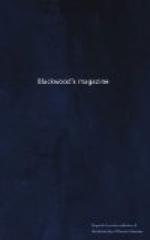[Footnote 51: The prototype of the well-known Welsh legend of Beth-Gelert, for instance, is found in the Sanscrit Hitopadosa, as translated by Sir William Jones, with a mere change in the dramatis personae—the faithful hound Gelert becoming a tame mungoos or ichneumon, the wolf a cabra-capello, and the young heir of the Welsh prince an infant rajah.]
At the head of this early school of romantic writers, in point of merit as of time, (for the writings of Lucian can scarcely be considered as regular romances; and the “Babylonica” of Jamblichus, and the “Dinias and Dercyllis” of Antonius Diogenes, are known to us only by the abstract of them preserved in Photius,) we may, without hesitation, place Heliodorus, the author of the “Ethiopics,” “whose writings”—says Huetius—“the subsequent novelists of those ages constantly proposed to themselves as a model for imitation; and as truly may they all be said to have drunk of the waters of this fountain, as all the poets did of the Homeric spring.” To so servile an extent, indeed, was this imitation carried, that while both the incidents and characters in the “Clitophon and Leucippe” of Achilles Tatius, a work which, in point of literary merit, stands next to that of Heliodorus, are, in many passages, almost a reproduction, with different names and localities,[52] of those in the “Ethiopics,” the last-named has again had his copyists in the “Hysminias and Hysmine” of Eustathius or Eumathius, and the “Dosicles and Rhodanthe” of Theodorus Prodromus, the latter of whom was a monk of the twelfth century. In these productions of the lower empire, the extravagance of the language, the improbability of the plot, and the wearisome dullness of the details, are worthy of each other; and are only varied occasionally by a little gross indelicacy, from which, indeed, none but Heliodorus is wholly exempt. Yet, “as in the lowest deep there is a lower still,” so even Theodorus Prodromus has found an humble imitator in Nicetas Eugenianus, than whose romance of “Charicles and Drosilla” it must be allowed that the force of nonsense “can no further go.” Besides this descending scale of plagiarism, which we have followed down to its lowest anti-climax, we should mention, for the sake of making our catalogue




